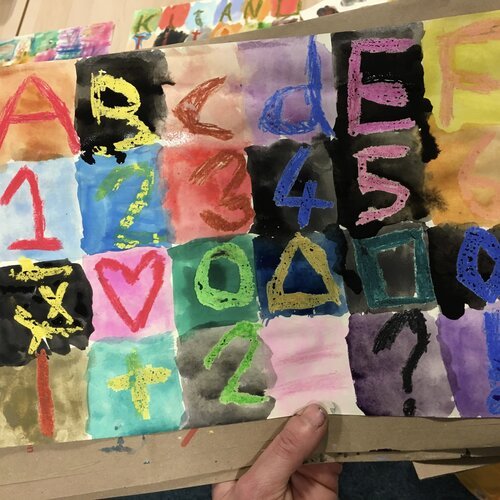Words are important - use them to nurture creativity.
Words Are Important.
Many of us will have been told at some point that we’re no good at something or other. That our way of doing it isn’t the ‘right’ way of doing it. There can’t be many people that don’t remember a parent or grandparent, a teacher, an art teacher even saying “What’s that meant to be?” “It doesn’t look anything like a....” “That’s not what a.... looks like”. And it feels like we’ve been squashed.
I believe there is no right or wrong way to be creative.
“Are your ears really that lumpy?” Best to think before we joke or criticise.
Perhaps we’ve heard other grown ups saying ‘I’m not arty, I can’t draw, I’ve not got a creative bone in my body’ etc and we think that’s how it should be for people who aren’t Leonardo Da Vinci. We grow up to repeat these things ourselves, probably in front of our children, and they look at our adult doodles and think, well if that’s no good, and mine are just scribbles, then I must be dreadful at this ‘art’ stuff. We don’t forget these words. We take them on and believe them, and it holds us back from showing our ideas, our thoughts and our doodles next time. We start to feel that we’re not as good as someone else, or not as creative or artistic, and so we stop practising and it becomes a self fulfilling prophecy.
Dexterity, focus, tenacity, practice, satisfaction - beauty?
I really believe that it doesn’t matter what it looks like. What matters is how you made it - the journey to get there, the methods learned and the ‘mistakes’ taken on board. Remember I’m talking about creativity. I’m talking about how to have ideas and put those ideas into practice. And practice is the point.
When we’re young we’re happy to scribble and explore, to test the feel and smell and squish of things. We put strange things next to each other and tell stories of imagined happenings and extraordinary endings. This is creativity. Architects who design buildings in earthquakes zones need creativity. Scientists looking for cures for new diseases, or screenwriters bringing mindbending stories to life all need exactly this creativity. This ability to juxtapose and extrapolate. To play and explore.
So feeling free to experiment and try things out is imperative for creativity, and the way that we talk about the things we make, the ideas we have, and in turn the thoughts and creations of our children, is really important.
This is the most important bit.
You don’t have to ‘like’ it.
It doesn’t matter if it’s ‘nice’ or not. It’s too easy to say “oh that’s lovely” when it’s a really strange and confusing picture, or a load of weird things stuck together that looks mostly like rubbish.
Much harder, but way more beneficial, is to spent a moment looking and to notice something. “I see you’ve put the red and the green together, don’t they just pop?” To spot the effort and to ask about it. “That looks so sturdy, how did you manage to make that stand up?” Even just “What’s the story here?” or “Tell me about this” leaves the way open for tall tales and creative imaginings.
Truthfully though, most of the time your opinion really doesn’t matter. What matters is giving them the time to tell you about their work, to share their creative journey with you. If every single time they show you something they’ve made and every single time you say “oh that’s nice”, how can they trust your judgement? Sometimes things will be thrown together in a matter of minutes then quickly discarded. Other times they will’ve spent spent ages perfecting something that they are so proud of. If everything is always brilliant then there’s no room for improvement. How can ‘mistakes’ become ways to learn, understand and develop if they too are always ‘nice’.
“This painter is painting a woman - her arms are inside her jumper because she’s cold.” M. Aged 5
If you don’t ask you may never hear the story…
Just to add, it’s usually best not to guess at what it is. “Look at that cute little panda” will probably be met with “it’s a killer ninja with apocalyptic death sticks”. This has happened to me.





